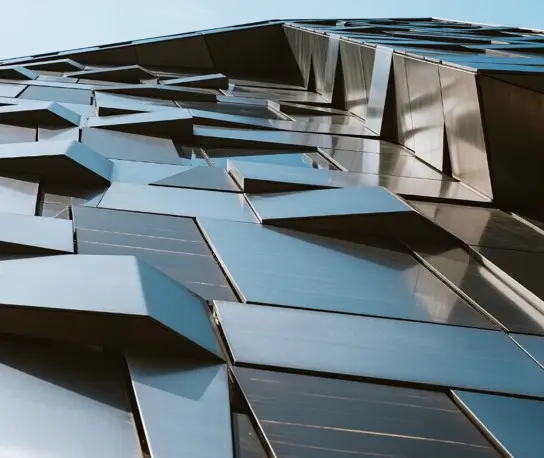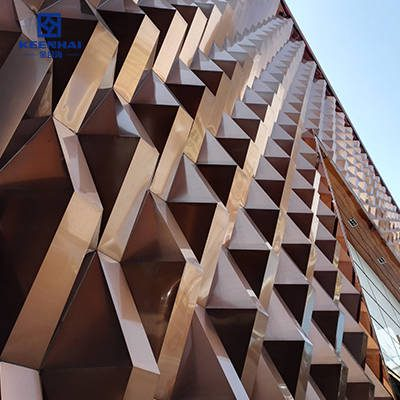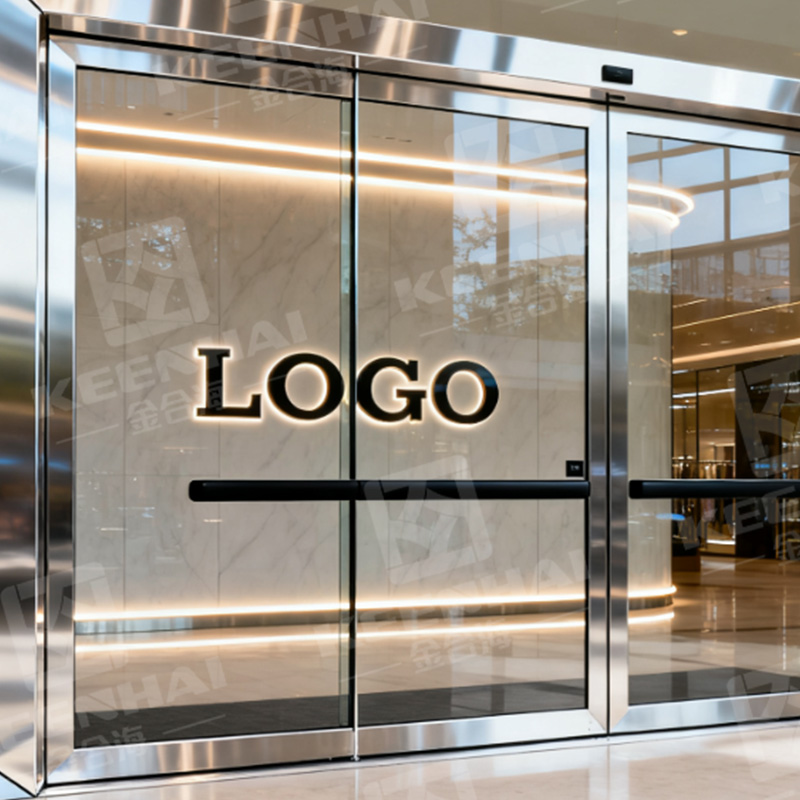Stainless steel is generally the better choice for most users. It offers superior durability, corrosion resistance, and versatility, making it ideal for kitchens, furniture, and architectural projects. Inox is essentially the same material, but the term is less common globally.
1.Material Composition and Properties
1.1 Definition of Inox
Inox is a high-quality corrosion-resistant steel widely used in both industrial and architectural projects. Its key feature is the chromium layer that prevents rust and maintains a polished surface. For instance, inox panels can keep a clean, professional look even in humid environments without frequent maintenance. Its strength and resistance make it ideal for applications that require durability and low upkeep.
1.2 Definition of Stainless Steel
Stainless steel is a versatile alloy with excellent durability, corrosion resistance, and aesthetic appeal. It contains iron, chromium, and often nickel, creating a material suitable for structural, decorative, and functional uses. A well-designed Placa de metal de acero inoxidable installed on a modern facade demonstrates how stainless steel combines longevity with a sleek appearance, adding value to any building project.
1.3 Key Similarities and Differences
Both inox and stainless steel offer strong corrosion resistance and long-term durability, but they differ slightly in terminology and global recognition. Inox is commonly referenced in Europe, while stainless steel is widely recognized worldwide. Their chemical compositions are similar, though certain grades vary in nickel content, hardness, and magnetic properties.
| Property | Inox Steel | Acero inoxidable |
|---|---|---|
| Chromium Content | 10–18% | 10–20% |
| Nickel Content | 0–10% | 0–12% |
| Resistencia a la corrosión | Alto | Very High (depends on grade) |
| Typical Applications | Industrial equipment | Architecture, industrial tools |
| Magnetic Properties | Usually non-magnetic | Can be magnetic depending on grade |
Stainless steel excels in applications requiring high durability and visual appeal. For example, a Pared exterior de acero inoxidable on a commercial building maintains its sleek look while enduring weather changes, and a premium PVD stainless steel solution ensures consistent quality across large-scale projects.

2.Strength and Durability
2.1 Resistance to Corrosion and Rust
Stainless steel naturally forms a protective chromium oxide layer that prevents rust and corrosion, even in humid or salty environments. In contrast, many metal alloys without this layer can show surface rust within months if exposed to moisture. For example, a Fachada con revestimiento metálico de acero inoxidable installed on a coastal commercial building resists corrosion from salty air for over 20 years without discoloration. Inox shares similar corrosion-resistant properties but may require slightly higher nickel content for marine-grade applications. The key to long-term protection is avoiding scratches and regular cleaning, which keeps the protective layer intact.
2.2 Wear and Impact Resistance
Stainless steel combines hardness with flexible toughness, allowing it to withstand accidental impacts or heavy loads without permanent deformation. Wood, on the other hand, can dent, crack, or splinter under impact, especially softer species like pine or fir. Buildings or furniture exposed to frequent use benefit from stainless steel’s strength. Chapa de acero inoxidable de metal used for interior paneling can endure heavy traffic and resist scratches, maintaining a sleek look.
| Material | Scratch Resistance | Impact Resistance | Typical Use Cases |
|---|---|---|---|
| Acero inoxidable | Very High | Alto | Exterior walls, furniture, racks |
| Inox Steel | Alto | Moderate | Industrial equipment, panels |
| Wood (Oak, Walnut) | Moderate | Low–Moderate | Cabinets, flooring |
This table shows how stainless steel consistently outperforms wood or unprotected metals in wear and impact scenarios. For instance, a stainless steel exterior staircase can handle heavy daily traffic for decades without noticeable damage.
2.3 Lifespan in Different Environments
Stainless steel’s lifespan varies with environmental exposure but often exceeds 50 years in moderate climates and 20–30 years in coastal or industrial areas. Inox performs similarly but may require careful grade selection. Wood’s lifespan depends on species, moisture, and maintenance—untreated wood outdoors can decay in 5–10 años, while treated hardwood may last 20–30 years with upkeep. A real-world example is a Pared exterior de acero inoxidable installed on a sunny urban building; it remained pristine for 25 years despite rain, sun, and pollution. For long-term durability, consider:
-
Selecting marine-grade stainless steel in high-humidity or coastal areas.
-
Scheduling limpieza regular to remove debris and prevent surface scratches.
-
Using protective coatings like PVD finishes for added resistance and aesthetic appeal.
Stainless steel’s superior durability, corrosion resistance, and low maintenance make it an ideal choice where long-term performance is critical, especially in environments where wood or regular metals would degrade faster.

3.Maintenance and Cleaning
3.1 Ease of Daily Cleaning
Stainless steel surfaces are exceptionally easy to clean, requiring just a soft cloth and mild detergent. Unlike wood, which can absorb liquids and stain easily, stainless steel does not harbor bacteria and can withstand frequent wiping. For example, a modern Placa de metal de acero inoxidable kitchen backsplash in a restaurant can be cleaned multiple times a day without fading or warping. Routine cleaning steps include:
-
Wiping down with a damp microfiber cloth.
-
Using a gentle soap solution for fingerprints or smudges.
-
Rinsing with water and drying to avoid streaks.
This straightforward process saves both time and effort, especially in commercial or high-traffic environments.
3.2 Long-Term Upkeep Requirements
Over time, wood surfaces require sanding, sealing, or refinishing, particularly in humid areas, to prevent warping or discoloration. Stainless steel, in contrast, maintains its finish for decades if cleaned properly. A Chapa de acero inoxidable de metal installed on a high-rise exterior wall can last 20–30 years with minimal upkeep, even under heavy rain, UV exposure, or pollution. Key long-term maintenance steps for stainless steel include:
-
Periodically checking for scratches or dents.
-
Applying a thin layer of protective oil or polish for high-traffic surfaces.
-
Avoiding abrasive cleaners or steel wool that can damage the finish.
This predictable upkeep makes stainless steel ideal for environments where reliability and low maintenance are essential.
3.3 Resistance to Stains and Surface Damage
Stainless steel naturally resists staining from liquids, oils, and chemicals, unlike wood, which can absorb moisture and develop mold or discoloration. Pared exterior de acero inoxidable panels on urban buildings show minimal staining after years of exposure to pollution and acid rain.
| Material | Stain Resistance | Scratch Resistance | Recommended Cleaning Frequency |
|---|---|---|---|
| Acero inoxidable | Very High | Alto | Weekly or as needed |
| Wood (Hardwood) | Moderate | Low–Moderate | Monthly maintenance |
| Coated Metal | Moderate | Moderate | Weekly with care |
This comparison illustrates how stainless steel outperforms wood in resisting stains and surface damage, particularly in environments with moisture, heavy use, or chemical exposure. For example, a polished stainless steel bar cabinet can endure years of daily use without losing its sleek appearance, while a wooden cabinet may require refinishing every 5–10 years.

Temperature Control and Wine Aging
4.1 Thermal Retention of Stainless Steel vs Wood
Stainless steel excels at maintaining consistent temperatures due to its non-porous structure and high thermal conductivity. A Bodega de acero inoxidable installed in a basement can keep wines stable between 12°C and 16°C with minimal fluctuation, even during summer heat waves. Wood, while offering natural insulation, can absorb heat and moisture, causing temperature variations that may affect aging. For optimal thermal retention, stainless steel units often include:
-
Double-wall construction with insulating layers.
-
Temperature sensors to monitor fluctuations.
-
Sealed doors and tight fittings to reduce air leaks.
These features ensure that fine wines mature under controlled conditions, reducing risks of spoilage or oxidation.
4.2 Impact on Wine Quality Over Time
Wine aging relies heavily on stable temperature and humidity. Stainless steel surfaces do not interact chemically with wine storage environments, preventing off-flavors and contamination. In contrast, wood cabinets can release tannins or react to humidity changes, subtly affecting taste over time. A Stainless Steel Wine Racks system in a modern cellar allows wine bottles to rest securely at a slight angle, minimizing sediment disruption and ensuring consistent cork moisture. Key considerations for preserving wine quality:
-
Keep temperature within 12–16°C for red wines, 8–12°C for white.
-
Maintain relative humidity at 60–70% to protect corks.
-
Avoid direct sunlight, vibrations, or strong air currents.
Proper design and material selection directly influence the longevity and flavor integrity of your collection.
4.3 Cooling Efficiency and Insulation Considerations
Effective cooling systems depend on both propiedades del material and design. Stainless steel walls conduct cold efficiently and work well with refrigeration units to maintain desired temperatures. Wood cabinets provide passive insulation but require thicker panels and may need additional cooling for large collections.
| Material | Thermal Conductivity | Humidity Stability | Cooling Efficiency |
|---|---|---|---|
| Acero inoxidable | Alto | Very High | Excellent |
| Wood (Oak/Hardwood) | Low–Moderate | Moderate | Moderate |
| Composite Panels | Moderate | Alto | Good |
A practical example: a commercial wine shop installed Stainless Steel Bar Cabinets with integrated cooling. The system reduced energy consumption by 15% while maintaining stable storage conditions across all racks, showing how stainless steel improves both performance and efficiency in real-world scenarios.
Whatever name you choose, give it 20-year color life with a PVD stainless steel sheet finish.






